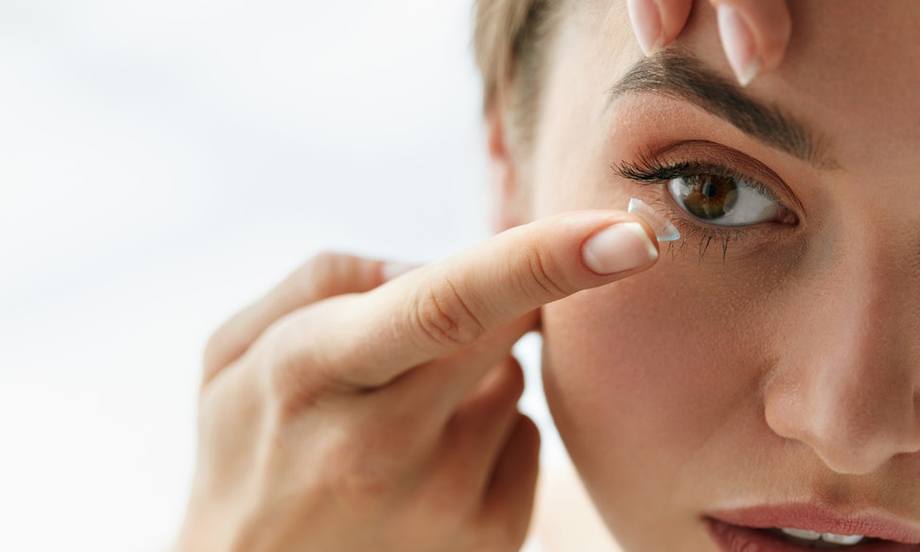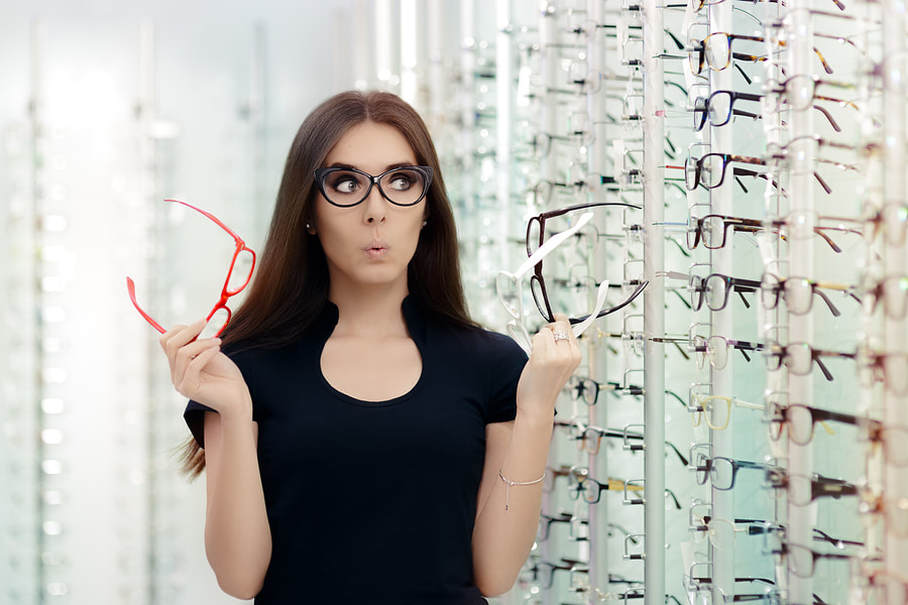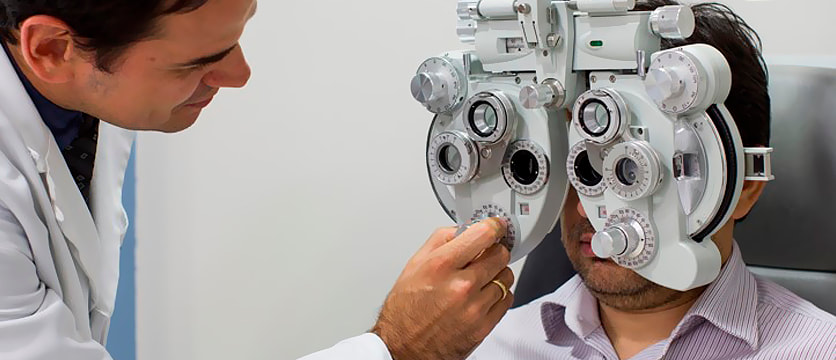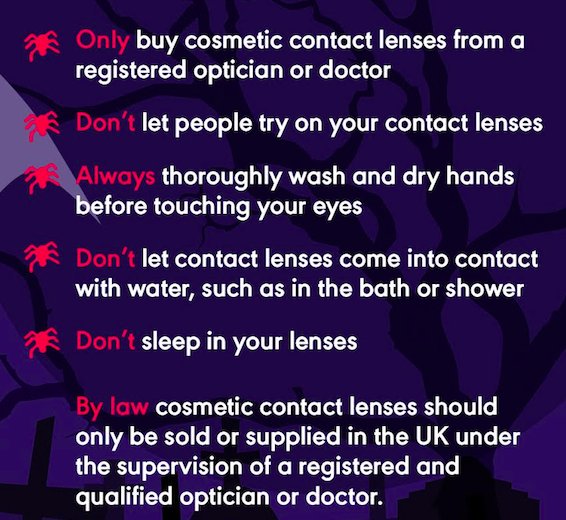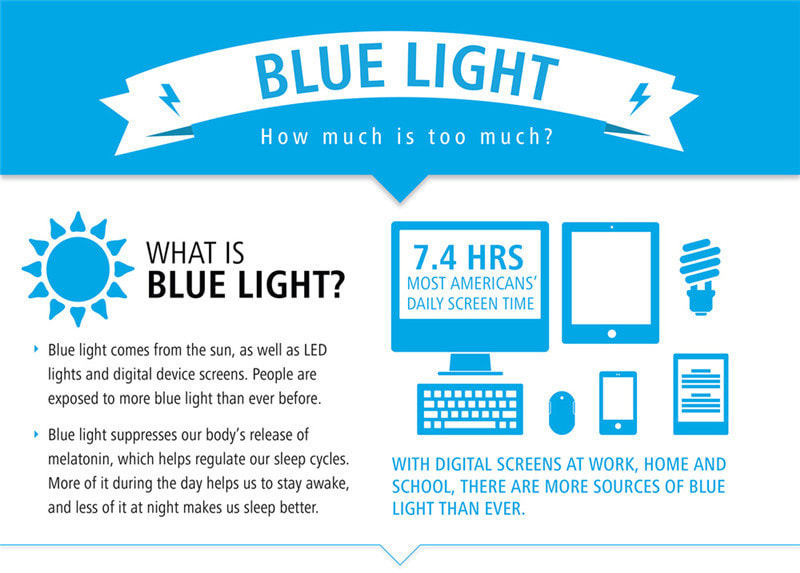

Myths and Facts about Contact Lenses
Posted by: F.Y.EYE Optometry
November 30, 2018
I can't wear contact lenses.
Yes, you can! Thanks to advances in contact lens technology in recent years, just about everyone can wear contacts. For example, there are many bifocal contact lenses for people with presbyopia; soft, rigid and hybrid contact lenses that correct astigmatism; and custom contact lenses that can correct even the most challenging prescriptions.
A contact lens will get lost behind my eye.
Nope! A thin membrane called the conjunctiva covers the white of your eye and connects to the inside of your eyelids, making it impossible for a contact lens to get lost behind your eye.
Contact lenses are uncomfortable.
Not true. After a brief adaptation period, most people don't even notice they're wearing contact lenses. For those who do experience contact lens discomfort, several discomfort remedies are available once the cause is pinpointed.
Contact lenses can get permanently stuck to my eye.
While it's true that a soft contact lens can stick to the surface of your eye if it dries out, remoistening the lens by applying sterile saline or a multipurpose contact lens solution will get it moving again.
Contact lenses are too much trouble to take care of.
Wrong! One-bottle contact lens care systems make cleaning and disinfecting your lenses easy. Or you can choose to eliminate contact lens care altogether by wearing daily disposable contact lenses.
Wearing contact lenses causes eye problems.
It's true that contact lens wear can increase your risk of certain eye problems. But if you follow your eye doctor's instructions regarding how to care for your lenses, how long to wear them and how frequently you should replace them, wearing contact lenses is very safe.
I'll never be able to get them in my eyes.
Sure you will. It might seem difficult at first, but your eye care professional will make sure you learn how to apply and remove your contacts before you leave their office. Most people become adept at handling contact lenses much faster than they expect to!
Contacts can pop out of my eye.
Years ago, old-fashioned hard contact lenses could sometimes pop out of a wearer's eyes during sports or other activities. But today's contacts — including rigid gas permeable (GP) contacts — fit closer to the eye so it's very rare for a contact lens to dislodge from a wearer's eye unexpectedly.
Contact lenses are too expensive.
Not true. Contact lenses can sometimes be less expensive than a good pair of eyeglasses. Even daily disposable contact lenses, once considered a luxury, can cost as little as a dollar a day.
I'm too old to wear contact lenses.
Who says? With the advent of multifocal contact lenses, and a number of new contacts for dry eyes, advancing age is no longer the barrier to successful contact lens wear it once was. Ask your eye doctor if you're a good candidate for contacts — the answer might surprise you. AA
Yes, you can! Thanks to advances in contact lens technology in recent years, just about everyone can wear contacts. For example, there are many bifocal contact lenses for people with presbyopia; soft, rigid and hybrid contact lenses that correct astigmatism; and custom contact lenses that can correct even the most challenging prescriptions.
A contact lens will get lost behind my eye.
Nope! A thin membrane called the conjunctiva covers the white of your eye and connects to the inside of your eyelids, making it impossible for a contact lens to get lost behind your eye.
Contact lenses are uncomfortable.
Not true. After a brief adaptation period, most people don't even notice they're wearing contact lenses. For those who do experience contact lens discomfort, several discomfort remedies are available once the cause is pinpointed.
Contact lenses can get permanently stuck to my eye.
While it's true that a soft contact lens can stick to the surface of your eye if it dries out, remoistening the lens by applying sterile saline or a multipurpose contact lens solution will get it moving again.
Contact lenses are too much trouble to take care of.
Wrong! One-bottle contact lens care systems make cleaning and disinfecting your lenses easy. Or you can choose to eliminate contact lens care altogether by wearing daily disposable contact lenses.
Wearing contact lenses causes eye problems.
It's true that contact lens wear can increase your risk of certain eye problems. But if you follow your eye doctor's instructions regarding how to care for your lenses, how long to wear them and how frequently you should replace them, wearing contact lenses is very safe.
I'll never be able to get them in my eyes.
Sure you will. It might seem difficult at first, but your eye care professional will make sure you learn how to apply and remove your contacts before you leave their office. Most people become adept at handling contact lenses much faster than they expect to!
Contacts can pop out of my eye.
Years ago, old-fashioned hard contact lenses could sometimes pop out of a wearer's eyes during sports or other activities. But today's contacts — including rigid gas permeable (GP) contacts — fit closer to the eye so it's very rare for a contact lens to dislodge from a wearer's eye unexpectedly.
Contact lenses are too expensive.
Not true. Contact lenses can sometimes be less expensive than a good pair of eyeglasses. Even daily disposable contact lenses, once considered a luxury, can cost as little as a dollar a day.
I'm too old to wear contact lenses.
Who says? With the advent of multifocal contact lenses, and a number of new contacts for dry eyes, advancing age is no longer the barrier to successful contact lens wear it once was. Ask your eye doctor if you're a good candidate for contacts — the answer might surprise you. AA
How To Choose Glasses For Your Face Shape
Posted by: F.Y.EYE Optometry
November 9, 2018
You don’t need to be a fashion expert to find eyeglass frames that look great on you. If you’ve ever walked into an optician’s office, you’ve seen the walls and racks full of an amazing array of eye wear. Choosing a pair of glasses can seem impossible, but our tips will help you narrow down the options and the right pair for your face, as well as your lifestyle and personality.
What Is Your Face Shape?
Heart: wide forehead, high cheekbones and a narrow chin.
Look for: aviators, butterfly and rimless styles that appear to broaden your chin and minimize forehead width.
Oblong: narrow chin and cheeks and a large forehead.
Look for: oversize styles and wraparound frames that make your face appear shorter and wider.
Round: full cheekbones and little to no angles.
Look for: rectangles, squares and sporty styles that make your face appear longer and thinner.
Oval: chin slightly narrower than the forehead.
Look for: both classic and trendy styles in a size that’s in proportion to your face.
Square: broad forehead and strong jawline.
Look for: rounded, oval, cat-eye and semi-rimless frames that soften the jaw line and make your face appear longer.
What's Your Lifestyle?
There are eyeglass frames for every way of life! Think about the activities you will do while wearing your eyeglasses. If you're active, Oakley offers sporty frames which can twist and bend without breaking. Need gaming glasses? Gamers can choose from a wide selection of stylish frames that enhance the gaming experience. When impressing the big wigs at the office, you can accessorize your business savvy with sensible style.
Fit Frames to Your Personality?
The frames you wear can say a lot about your personality. You can have a pair of glasses that showcase your fun loving side on the weekends and a pair that emphasizes your get down to business tone during the week. Adorn your face with your favorite color (as long as it doesn’t clash with your skin tone) or detailed embellishments and flare. Choose either one style of frames to express your personality or have a small collection of frames on hand to easily alter your appearance to suit your mood.
What Is Your Face Shape?
Heart: wide forehead, high cheekbones and a narrow chin.
Look for: aviators, butterfly and rimless styles that appear to broaden your chin and minimize forehead width.
Oblong: narrow chin and cheeks and a large forehead.
Look for: oversize styles and wraparound frames that make your face appear shorter and wider.
Round: full cheekbones and little to no angles.
Look for: rectangles, squares and sporty styles that make your face appear longer and thinner.
Oval: chin slightly narrower than the forehead.
Look for: both classic and trendy styles in a size that’s in proportion to your face.
Square: broad forehead and strong jawline.
Look for: rounded, oval, cat-eye and semi-rimless frames that soften the jaw line and make your face appear longer.
What's Your Lifestyle?
There are eyeglass frames for every way of life! Think about the activities you will do while wearing your eyeglasses. If you're active, Oakley offers sporty frames which can twist and bend without breaking. Need gaming glasses? Gamers can choose from a wide selection of stylish frames that enhance the gaming experience. When impressing the big wigs at the office, you can accessorize your business savvy with sensible style.
Fit Frames to Your Personality?
The frames you wear can say a lot about your personality. You can have a pair of glasses that showcase your fun loving side on the weekends and a pair that emphasizes your get down to business tone during the week. Adorn your face with your favorite color (as long as it doesn’t clash with your skin tone) or detailed embellishments and flare. Choose either one style of frames to express your personality or have a small collection of frames on hand to easily alter your appearance to suit your mood.
When To Schedule Your Next Eye Exam
Posted by: F.Y.EYE Optometry
October 26, 2018
How Often Should You Get An Eye Exam?
One eye exam every year should help you to stay on top of your eye health, but some people might need to schedule more than one exam in a year. Vision can change quite a bit over the course of a year, especially for those over the age of 50, and it is important to know when you need to schedule an exam.
Signs You Need To Schedule An Eye Exam
One eye exam every year should help you to stay on top of your eye health, but some people might need to schedule more than one exam in a year. Vision can change quite a bit over the course of a year, especially for those over the age of 50, and it is important to know when you need to schedule an exam.
Signs You Need To Schedule An Eye Exam
- Blurred Vision.
- Headaches.
- Difficulty seeing at night.
- Eye strain or fatigue.
- Your eyes are red, dry, itchy, or you are seeing spots, flashes of light, or floaters.
- You have diabetes or another health condition that affects your eyes. Also, if you have a family history of conditions like diabetes or glaucoma you may need exams more often, especially as you move into your 50s and beyond.
- You can't remember when you last had an eye exam. If it’s been longer than a year, you’re overdue.
- You have difficulty driving at night and seeing street signs in the dark.
- You experience eye strain, headaches and/or blurred vision after spending an extended amount of time in front of a computer screen.
- You get motion sick, dizzy, or have trouble following a moving target.
- You hold books or the newspaper further away from your face and squint or close one eye to read them clearly.
- You notice any changes in your vision, especially after an incident of head trauma.
Be Spooky But Care About Your Eye Health
Posted by: F.Y.EYE Optometry
October 19, 2018
Are Colored Contact Lenses for Halloween Costumes Safe?
- Colored Contact Lenses. Are contact lenses that change your eyes color. They are most popular during Halloween for costumes because they change your eye color, pupil shape, and give cartoon or film character effects to your eyes.
- Colored Contact Lenses are not FDA-approved. Never buy colored contact lenses from a business that doesn't ask for a prescription. In the United States it is illegal to sell any contact lenses without a prescription. Most of the lenses sold online, in beauty shops, and pop-up Halloween stores are sold illegally and are not FDA-approved.
- Risks of colored contact lenses on eye health. Non-prescription costume contacts can cut, scratch and infect your eye if they don't fit exactly right. Mis-sized lenses can cause corneal abrasions, corneal ulcers and potentially blinding painful bacterial infections like keratitis. Treating these injuries can require eye surgery, like a corneal transplant. And treatment doesn’t always work. People have been blinded by costume contact lenses.
- All contact lenses require an eye exam and proper fitting by an eye doctor. An eye exam will properly measure your eyes provide you with a prescription and inform you if contact lens are the right option for you. As well as instruct you about contact lens cleaning, disinfecting, and directions on wearing lenses.
How To Protect Your Eyes Against Blue Lights?
Posted by: F.Y.EYE Optometry
October 12, 2018
What to do to protect your eyes against the negative effects of blue light?
- Limit screen time when you are not working. In our digital age we constantly use digital screens at work, home, and, school. Give your eyes a break every 20 minutes look away from your screen and give your eyes a rest. The “20-20-20” rule: Every 20 minutes, shift your eyes to look at an object at least 20 feet away for at least 20 seconds. Most importantly don't forget to keep blinking while looking at your screens.
- Get regular comprehensive eye exams. Make sure to get an eye exam regularly from a licensed eye doctor (optometrist). Eye exams help you evaluate not only your vision, but also the complete health of your eyes. They can prevent serious eye care health problems such as glaucoma, cataracts, macular, degeneration, and detached retina.
- If you use your devices at night, use screen filters. Always remember to stop using electronic device an hour before bed. And turn on screen filters on all your electronic devices at night. This can warm up the lighting on your devices and make it easier on your eyes.
- Use Computer glasses and Anti-reflective lenses. Don't settle for regular cheap glasses. Get fitted for blue light filtering lenses to block the penetration of blue light from computers and digital devices. They're available for prescription and non-prescription glasses.
